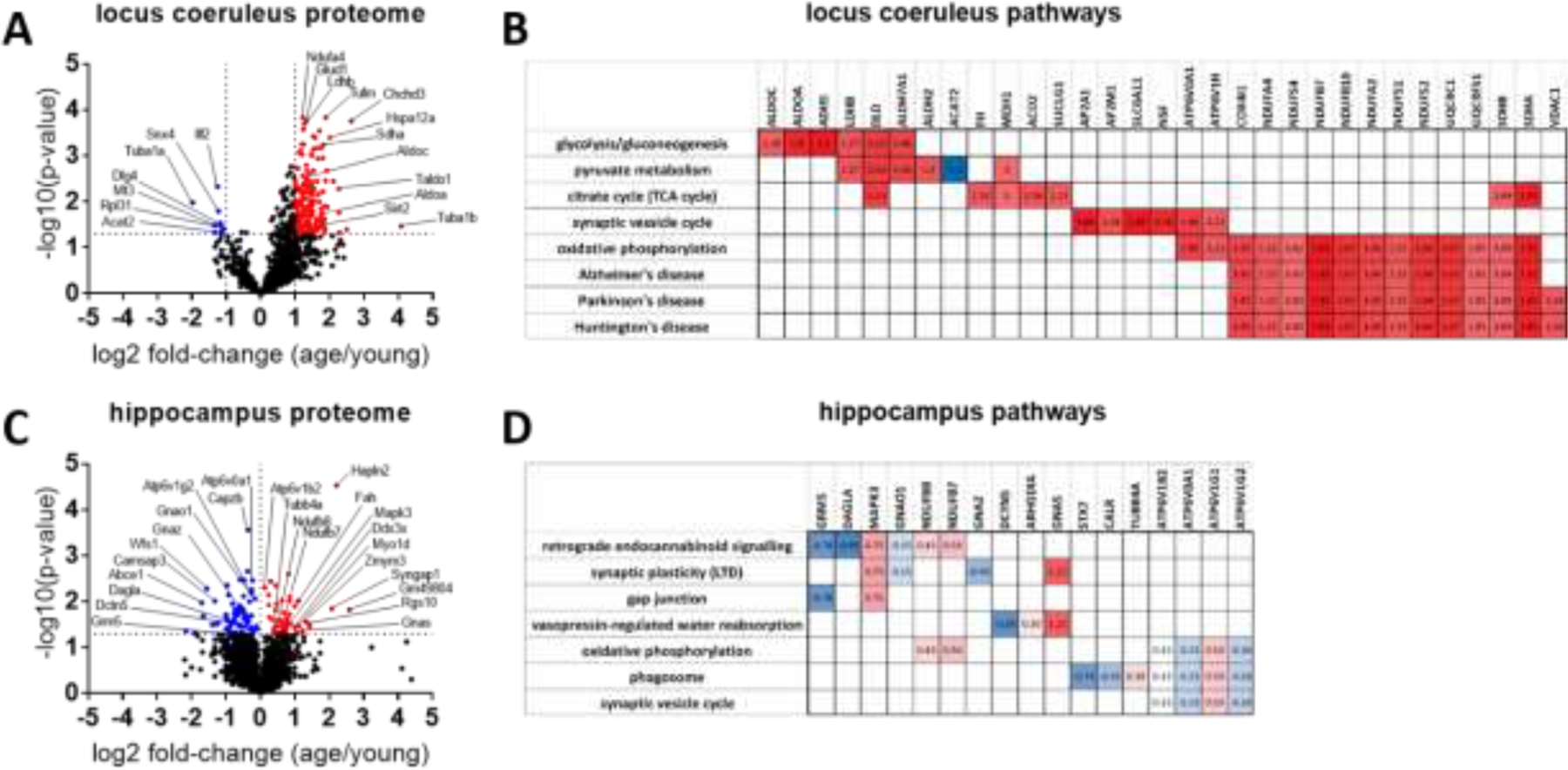Figure 3.

Volcano plots depict age-related fold-change and significance for proteins detected in the A) locus coeruleus and C) hippocampus with proteomics. A,B) In locus coeruleus (1043 proteins detected), 186 proteins were identified to be 2-fold up- (red) or down-regulated (blue) with age (fold change as old/young; p-value cutoff p<.05; -Log10(p-value)>1.3). B) Clustergram analysis for locus coeruleus identifies age-modulated proteins in specific pathways. Locus coeruleus pathways include metabolic pathways, oxidative phosphorylation and neurodegeneration as indicated by KEGG analysis. C,D) In hippocampus (2603 proteins detected), only 24 proteins met the 2-fold change criteria, so for hippocampal pathway analysis criteria was expanded to include all proteins that were significantly up- or down-regulated (p<.05; -Log10(p-value)>1.3; 118 proteins) independent of fold-change. D) Clustergram analysis for hippocampus identifies age-modulated proteins in specific pathways. Hippocampal pathways modulated with aging include retrograde endocannabinoid signaling, synaptic plasticity, oxidative phosphorylation, and phagosomes indicated by KEGG analysis. Blue indicates downregulation with age and red indicates upregulation with age. Numbers in clustergram indicate Log2 fold-change (aged/young) for each protein.
